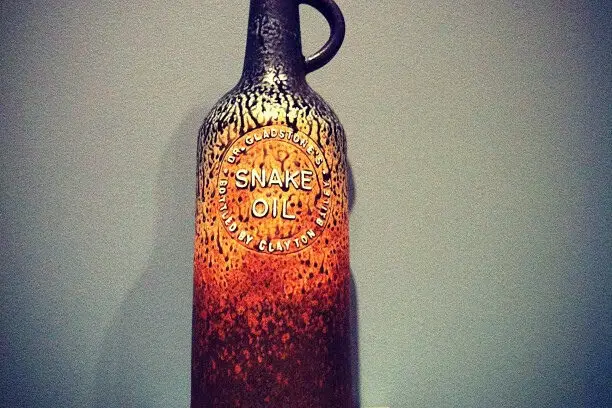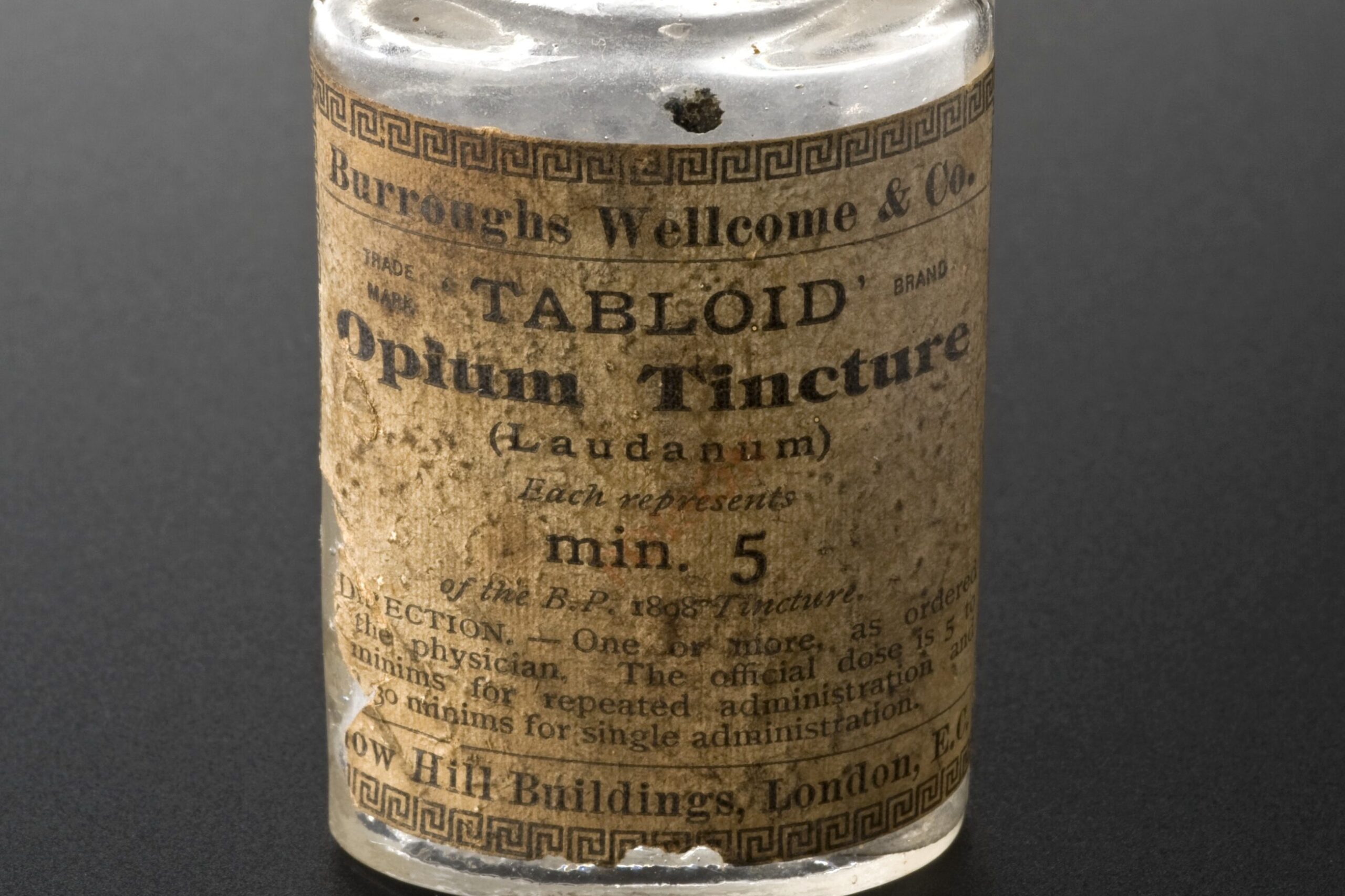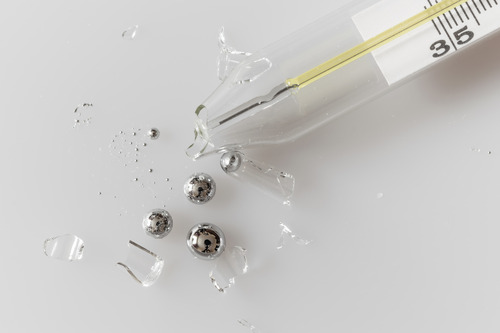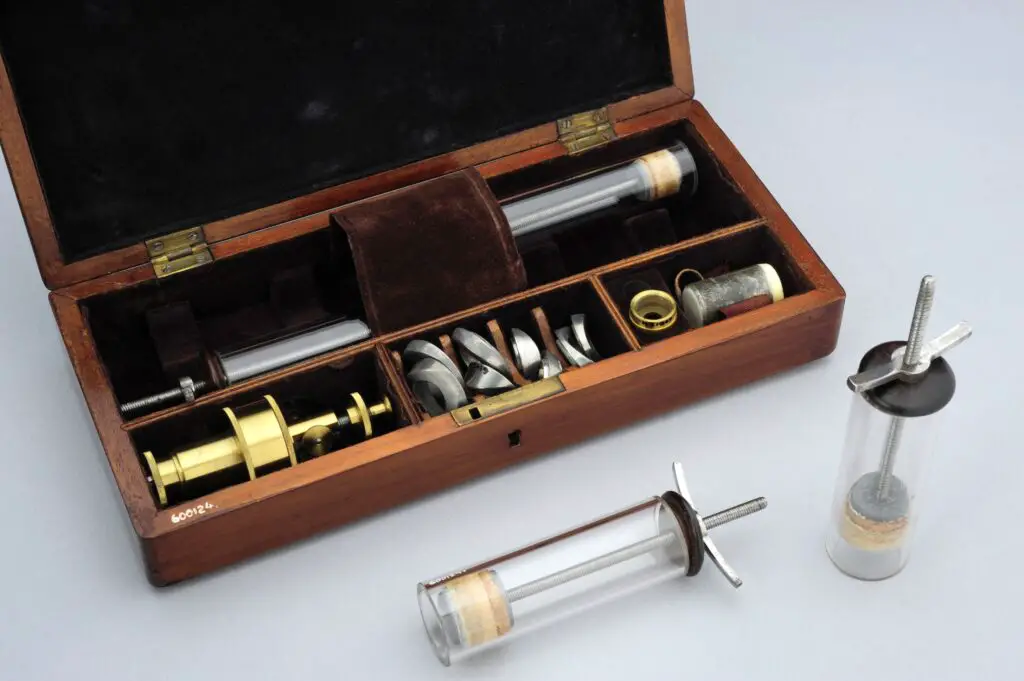1. Snake Oil for Joint Pain

Snake oil, believe it or not, wasn’t always the scam it’s become synonymous with today. In the 1800s, Chinese immigrants in the U.S. brought a form of this oil made from the Chinese water snake, which contained eicosapentaenoic acid (EPA), known for its anti-inflammatory properties. It was used to ease joint pain, particularly in people suffering from arthritis or rheumatism. For a while, it was considered a legitimate remedy and even had success stories of reducing pain and swelling.
However, over time, unqualified sellers started mass-producing their own versions of “snake oil,” often substituting ingredients with things that had no medicinal value at all. This led to the term’s association with fraudulent remedies. Despite its shady reputation, the original snake oil really did have beneficial components for pain relief.
2. Laudanum for Coughs

Laudanum, a tincture of opium dissolved in alcohol, was a common cure-all during the 1800s, and surprisingly, it actually worked for its intended purposes. It was frequently used to treat coughs, and it did have a calming effect on the body. The opiates in laudanum suppressed coughing by acting on the central nervous system, and its alcohol base also helped ease throat irritation. For many, it was a quick fix when they couldn’t find another remedy.
Of course, the addictive properties of opium meant that overuse of laudanum could lead to serious consequences, including addiction and death. It’s easy to see why its use became controversial as the 19th century progressed, but at the time, it was hailed as a miraculous solution to many ailments, especially chronic coughs and sleeplessness.
3. Mercury for Syphilis

Though it sounds strange and dangerous today, mercury was once a widely used treatment for syphilis. In the 1800s, doctors believed that mercury could purge the body of the syphilis-causing bacteria, and it was prescribed in various forms—sometimes as an ointment or taken orally. It was believed to “sweat out” the infection, and patients often endured heavy sweating as part of the treatment.
Mercury, unfortunately, is highly toxic, and prolonged exposure led to mercury poisoning, causing a range of symptoms from tremors to organ failure. However, at the time, it was one of the few treatments available, and some patients did experience temporary relief. It’s hard to imagine it being effective now, but it was a go-to for treating syphilis for centuries.
4. Epsom Salt Baths for Toxin Removal

Epsom salt, made of magnesium sulfate, was used in the 1800s as a remedy to cleanse the body of toxins. People believed that soaking in a warm Epsom salt bath helped pull out impurities through the skin and would even relieve muscle aches. It was also thought to promote relaxation and ease stress, which made it a popular remedy for everything from joint pain to anxiety.
Though the idea of “toxin removal” via the skin isn’t scientifically backed, the magnesium in Epsom salts is known to have therapeutic effects. It’s widely believed to help relax muscles, and modern science supports its ability to relieve minor aches and pains. Epsom salt baths remain a popular choice for home remedies today, showing that this 1800s cure has stuck around for a reason.
5. Trepanation for Headaches

In the 1800s, some doctors believed that trepanation—the practice of drilling a hole into the skull—was an effective way to treat chronic headaches and even mental illness. The idea was that by removing pressure or “evil spirits” from the brain, patients would experience relief. Trepanation wasn’t always a successful procedure, and the idea of drilling into one’s skull sounds barbaric today.
However, in certain cases, the removal of bone did relieve pressure caused by conditions like brain swelling or tumors, though it wasn’t fully understood at the time. Some modern neurosurgeons point to trepanation as a primitive precursor to modern brain surgery, though the risks were often too high to make it a truly effective treatment for headaches.
6. Leeching for Blood Flow

Leech therapy was another odd-sounding remedy that gained popularity in the 1800s. Doctors believed that leeches, which are bloodsuckers, could help balance the body’s humors by removing “bad blood.” It was used to treat everything from fevers to infections, as it was thought that removing blood could rid the body of illness-causing substances.
While leeching seems barbaric by modern standards, it did have some medical merit. Leeches secrete an enzyme that helps prevent blood clotting, which could improve blood flow in certain medical conditions. Today, leeches are sometimes used in modern medicine, particularly in reconstructive surgery, to prevent blood clots and improve circulation in reattached body parts.
